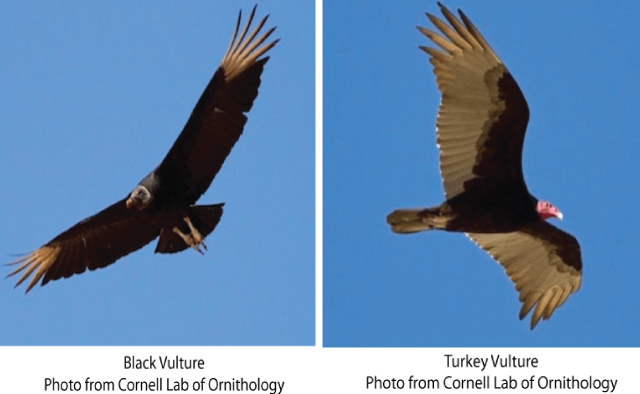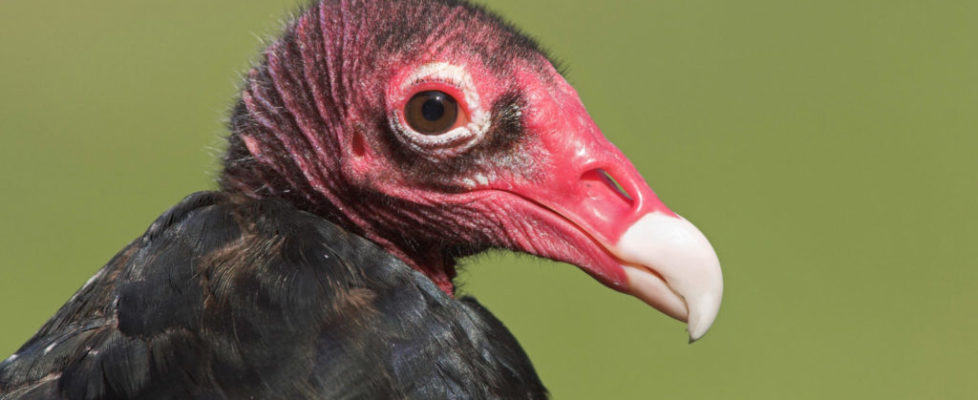Secret Life of Croton’s “Carrion Crows”
You don’t have to be a birder to notice the huge flocks—sometimes numbering 100 or more—of big, dark birds looming over downtown Croton-on-Hudson this fall and winter. Or to know what they are: vultures (often nicknamed “carrion crows” or “buzzards”), those notorious scavengers of road kill and other carcasses that seem to be increasing in number every year around these parts.
Their growing presence is all a glance will tell you about the local vultures, and for many people, that’s all they need to know. But—as with so much in the natural world—if you take a moment to look closer, you’ll see that the story of these big birds is far more complicated, full of surprising twists and turns.

First of all, Croton doesn’t simply have “vultures”: It has two different kinds, Turkey and Black. They’re actually pretty easy to tell apart. The more common TVs, brown-black in plumage, have long wings that slant upwards, forming a V, as they tilt buoyantly in even a slight breeze. BVs, a more recent arrival in our area, are darker (with silver-white patches at their wingtips), slightly smaller and squatter, and have a heavier flight. They flap much more frequently than their cousins.
And while they both have bare, featherless heads, Turkey Vultures’ are pink and Black Vultures’ grey-black. (Bare heads make for less mess when they’re delving deep in a carcass for succulent morsels—and aren’t you glad you know that now?)
But there are other, more fascinating differences between the species. Turns out they also boast dramatically different behavior, feeding habits, and dominance.
For example: Even though we see the two species soaring and roosting together, they don’t actually get along that well. Since Turkey Vultures are larger on average, a single individual can dominate a single Black at a feeding site. But Black Vultures have a way to counteract that size disadvantage: They team up. They form a pack…and a pack of BVs can almost always drive a lesser number of TVs away.
Secondly, while Turkey Vultures depend almost entirely on carcasses for their food (only rarely killing a sick or young animal), Black Vultures hunt live prey much more frequently. The pack mentality, more akin to wolves or lions than other birds, even allows them to bring down mammals such as skunks, calves, and young pigs.
But perhaps the most striking difference between the two species is that they use two entirely different senses to locate carrion.
Black Vultures, like most day-flying predatory birds, rely on their keen eyesight. When foraging or hunting, they soar (and flap) high in the sky, scanning the ground below.
Turkey Vultures, however, use a far rarer—almost unheard-of—method: They employ their sense of smell. Recent research has shown that the vultures possess an olfactory bulb (an area of the brain that processes odors) far larger than that of Black Vultures. In fact, their olfactory bulbs are larger as a proportion of brain volume than those of nearly 150 other bird species studied.
This and other anatomical differences allow Turkey Vultures to recognize ethyl mercaptan, a chemical produced when a dead mammal has begun to decay. The vultures can detect this chemical sooner after death than any other carrion-eater, making them most often the first to the feast.
The same adaptations mean that foraging Turkey Vultures tend to fly low over the canopy, which gives them a better chance of catching that first whiff of ethyl mercaptan. And the Black Vultures? While they soar higher, scanning the ground with their keen eyes, they’re also keeping a close eye on their cousins flying closer to the ground. When a Turkey Vulture locates the carcass first and descends, down swoop the BVs as well. (And then sometimes attack in a pack to drive away the bird that first located the meal.)
Perched on their rooftops and tree limbs, Croton’s carrion crows seem little more than a group of silent, hulking nuisances. But like almost everything in nature, they actually paint an extraordinary portrait of adaptation, competition, and survival. One that rewards a closer look.
Joe Wallace



